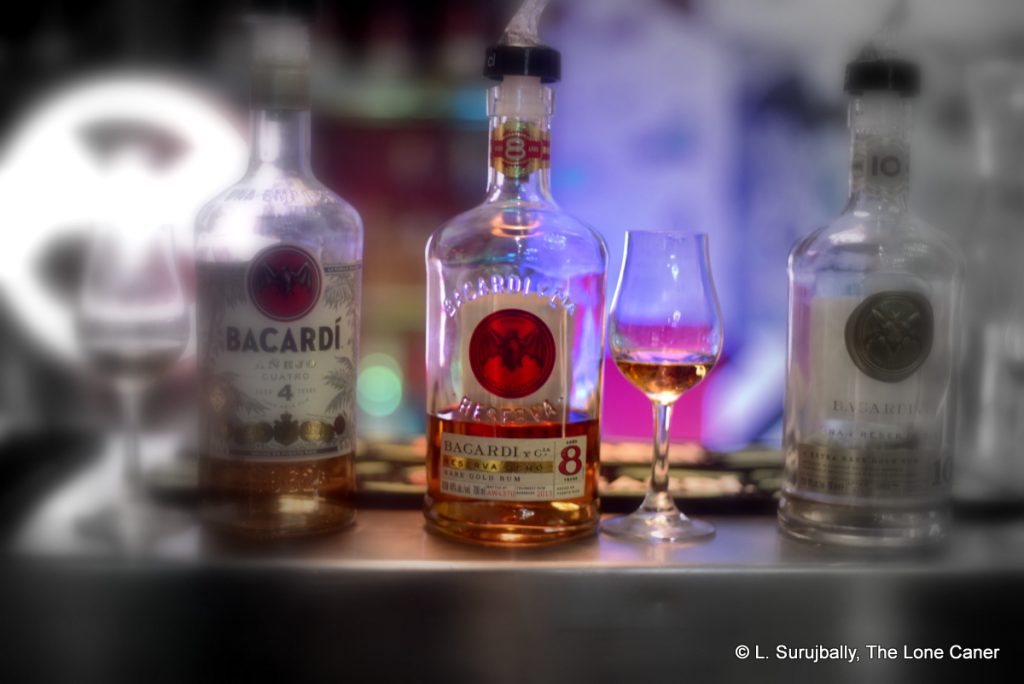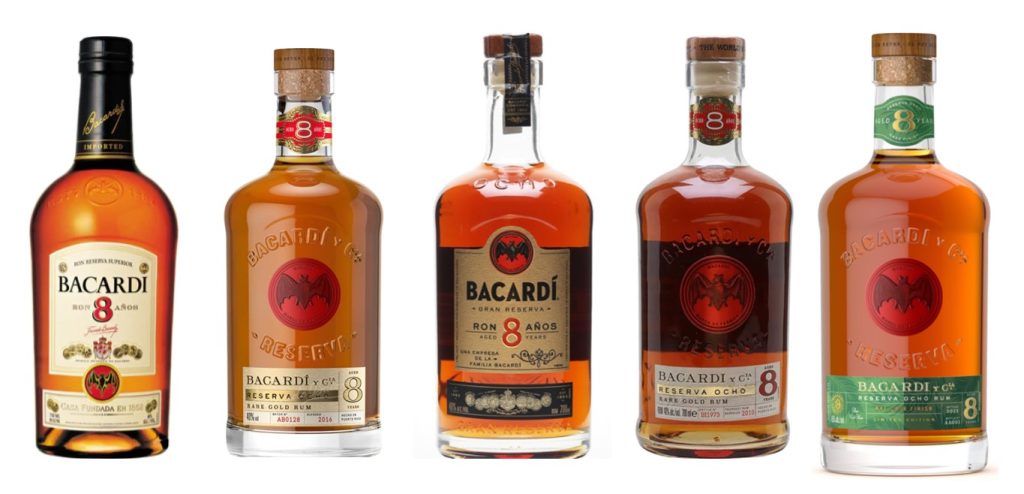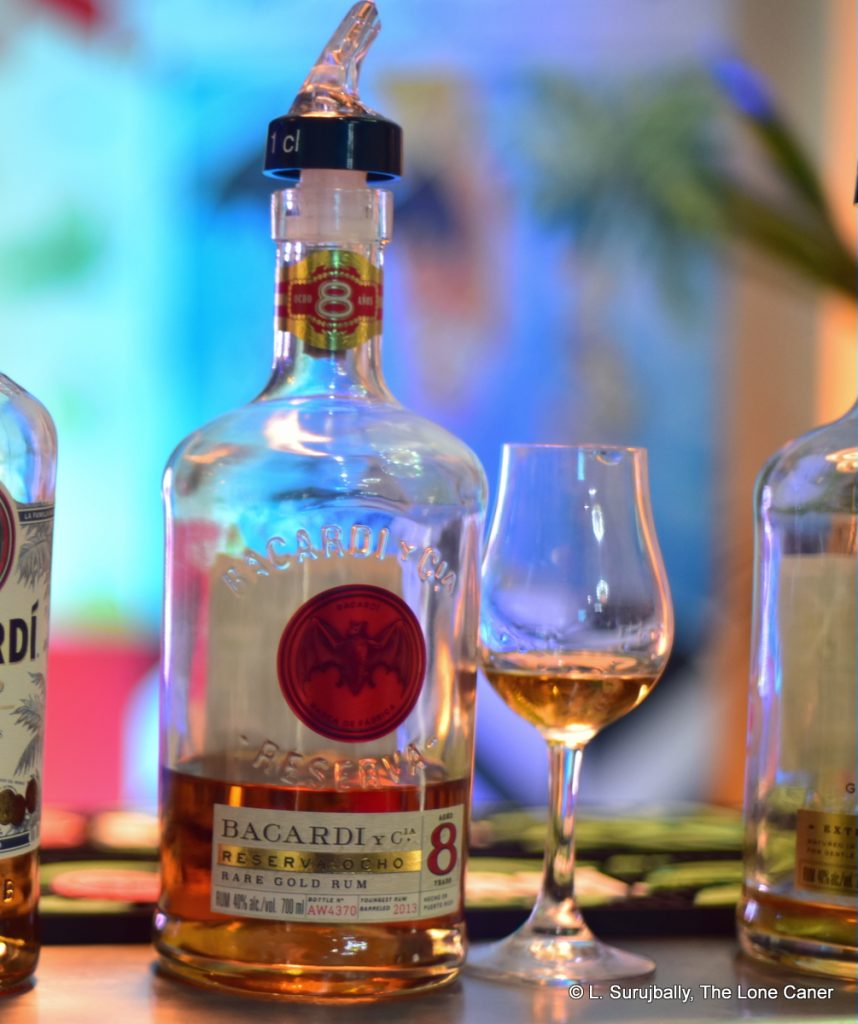Bacardi hardly needs an introduction. It’s a company of ancient vintage (in rum years), one of the first and remaining big guns of the entire sector, with a storied past from the 19th century, involving the rise of an immigrant family, ruthless business practises, revolution, heartbreak, loss, global expansion and emergence at the other end as one of the great spirits conglomerates in the world. In so doing it has carved a reputation for itself so enormous that one hardly needs to say rum after its name, it is so synonymous and clearly identified with that one single drink.
And yet Bacardi as a whole has a curiously ambivalent relationship with the rum population of today, and the reputation it sports is not without its downside. Their rum is not seen as a stopping point but a start, something to leap beyond, quickly, as soon as one’s wallet can reasonably afford the extra increments that would allow one to buy a true “premium” (by whatever standard people use to define one). For this, to some extent, I blame Bacardi’s modus operandi of relentlessly pushing high-volume, low-quality mass-selling low-priced everyman rums like the Blanca, Gold or even the Superior, into every market possible without regard for improving them much or seeking to colonise a more elevated ethos of quality or premiumisation.
Even if they sell like crazy the flip side is that such ubiquitous cheap rums dilute brand appreciation and make more upscale offerings seem equally lacklustre. These days, rum writers barely acknowledge or review them any longer. And, as many of today’s expanding indies have found, while you certainly need low-priced blue-collar young rums to sell and make cash flow, you also really premium aged rums to seriously develop the brand ito a true quality seller with consumer recognition and appreciation – something Bacardi has singularly failed to do in spite of efforts like the Facundo line, the occasional ultra-expensive halo releases, or the Single Cane brand 1.
Whatever our opinion of the Bat, however, we must always consider the groundwork laid by its famed blends from decades past — because among all the dross, we can indeed find the occasional surprise lying like a forgotten gem in the mud and dreck of carelessly made cheap supermarket hooch we see every day. And one of these is the rebranded Bacardi 8 year old, now called the “Reserva Ocho Rare Gold Rum.” To my mind it is among the best of the not-quite-upscale rums Bacardi makes, and Bacardi seems to have recognized it also, because they recently established (2021) the Ocho as an anchor of Bacardi’s Premium rums which began releasing variations with different finishes to buff and bolster the line.
The Bacardi Ocho / 8 in all its various guises remains quite affordable, has a solid age statement, has several components of the blend which are older than the youngest 8YO, and even if it’s issued at a lacklustre 40% (when will they move beyond that ridiculous self imposed standard, honestly? Is even 43% or 45% for major broad based releases too much to ask for?) it does have more in its trousers than is generally acknowledged.
The nose, for example, shows that quality, if perhaps too subtly for some. Even at that milquetoast strength, one can detect cinnamon, woodiness, leather, licorice, vanilla, and citrus. It’s reasonably complex for 40% – the sly and subtle fruity notes which dance and play and disappear just as soon as one comes to grips with them are a case in point – but after the off-kilter memory of the Exclusiva, it remains a somewhat less memorable dram. It is, however, clearly and professionally made, a good step above the Gold, or the Cuatro.
The palate is a harder nut to crack. There are definitely tasting notes to be had for the diligent: it is relatively soft, warm, a touch spicy. There are notes of masala, cumin and cinnamon, standing cheek by jowl with vanilla, a squeeze of lemon zest, mauby bark, strong tea, and a hint of sweetness developing at just the right time. So you’re getting bitter and sweet, and a nice lick of the tannins from the barrel, offset to some extent by softer, more fruity notes. I just wish there were more, and the low strength makes the short and light finish a rather pallid affair – it’s aromatic, woody, tannic, tobacco-infused, with some sweet to balance things off…there’s just not enough of it, I think.
For reasons surpassing my understanding, the whole rum gives this impression of trying hard to be less when it’s actually more, a perception that dogs the brand nowadays. Most reviewers don’t know what to do about the company’s wares, really, and in fact many new writers and commentators walk straight past the company and jump straight into favoured indie bottlers and expensive new craft rums (I envy them this ability, sometimes) without often stopping to wonder at the strange longevity and quality of what, at first sight, doesn’t seem to be much. It’s gotten to the point where any crowd pleasing column-still rum made by a massive conglomerate is not usually seen as a member of the Key Rums pantheon.
Yet I believe that there are reasons why a rum like this can not only be called key, but serious. It does, of course, tick all the boxes. It is affordable, whatever one might say about the source of that low cost. It is available, a point to which my personal travels can attest – I’ve found the rum from the small speakeasies of Alaska and the Yukon to the bars of Central Asia, for illicit sale in the Middle East and just about everywhere in between. The Bacardi Gold is even more easily gotten (and even cheaper) but when it comes to some decent sipping quality of rum, it’s either the 8 or the 10 and for my money, given its decades-long availability everywhere I looked (or didn’t), the 8 gets it because the ten just doesn’t cut the mustard for me in the same way.
Bacardi’s rums as they have been for ages, don’t rely overmuch on flavours developed by fermentation or prioritise the distillation apparatus the way new kids on the block do; their expertise is in wood management, careful barrel usage and selection, and then the subsequent blending. They are based on the skill of maestros roneros with oodles of experience and decades of background in the craft. What comes out the other end can’t be denied, and when I consider the oft-unacknowledged chops of the Ocho as one of the premiere Spanish heritage style rums of the world, it is clear that it isn’t just a key rum for me, but a benchmark against which I rate many others of the style. And that’s no mean achievement for a brand often dismissed as yesterday’s leftovers. As I’ve tried to make clear here, it really shouldn’t be,
(#969)(82/100) ⭐⭐⭐½
Other Notes
- 2024 Video Recap available here.
- The blend is tweaked slightly but remeins quite consistent. Of the five different labels shown in the picture, only the green rye-finish edition is substantially and noticeably different.
- Although made in Puerto Rico, I argue it is less a local Key Rum emblematic of the island, than a global one.


